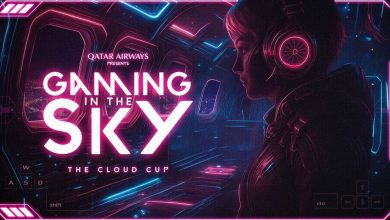Words by Paolo Mercado
Illustration by Michaela Macalinao
Often, when I speak about the Creative Economy agenda of the Philippines, some people would ask if I believed having more Art Education will help nurture creativity in the country. Others make an even stronger statement that an over-emphasis on Science, Technology, Engineering and Math (STEM) courses & professions is one of the biggest barriers to engendering Creativity in the young.
My response to this is YES… BUT.
YES, I firmly believe that to foster Creativity, educators must go beyond STEM and expanded to STREAM which integrates Reading (i.e. Literature, not just grammar) and Arts (visual, film, sculpture, dance, music, performance, etc.) as essential parts of the curriculum. This is the classic Renaissance Man education that produced the Artist & Scientist figures such as Da Vinci, Newton and even Einstein.
BUT even if schools embrace STREAM, this will not necessarily engender Creativity. In fact, depending on how STREAM is taught, it could even suppress creative thinking.
Creativity is often associated with the Arts. “Artist ka ano? Kaya ka Creative” is an often repeated phrase. But Creativity is not the exclusive domain of the Arts. In fact, Creativity in Science, Math & Technology is as important as Creativity in Music, Film, Dance and Design. In my Berlin School classes, it was often highlighted that in today’s world the combination of Art+Code are essential for workers and companies to be competitive in a digitally- driven creative world.
If we understand Creativity as the “capability to create something new” then the creative faculty is clearly not the exclusive domain of the Arts. Science & Technology can be very creative, we just call it a different name: Innovation. The mad scientist in his lab, the inventor in his garage, and the child tinkering with Lego bricks and robot parts, these all involve science, technology, engineering and math, but the process is Creative at the core. Stanford University in fact reframed the old Scientific Method as a creative process and have called it Design Thinking. Innovation hubs often include Maker Spaces which are essentially workshops where you are allowed to mess things up to see what works.
However, if STEM pedagogy only focuses on memorizing tables of facts, drilling on established formulas, and focusing on set techniques, and there is little encouragement of experimentation, exploration and debate, then indeed creativity can be stifled. Unfortunately, as lab equipment is expensive, and good teachers are rare, STEM education in the Philippines is more about memorization rather than exploration. “Kailangan bang i-memorize yan?” (Do we still need to memorize that?)
In the same way that STEM can be creative, the Arts can likewise be UN-creative. This is especially true when art classes focus on copying techniques, and art teachers train students to be mimics rather than originators. In a DTI event last year, I had a chance to speak with Lucille Tenazas, Asst. Dean for Parsons School of Design. We spoke about the difference of her art education in the Philippines and what she experienced when she studied abroad. She shared that in the Philippines, Art teachers tend to tell students what to do, and emphasize a right way versus a wrong way to approach Art or Design. Thus one is trained to conform to the views of the teacher or mentor. This is in contrast with what she experienced abroad where students are encouraged essentially to figure things out for themselves. They can present their own views, challenge norms, but also be challenged by others who may disagree with them. Debate and discourse are encouraged. And through this process, new things emerge.
The challenge of Creativity in Philippine schools is not about STEM vs. STREAM. That is a false debate. The real challenge is encouraging imagination & originality vs. emphasizing knowledge acquisition, memorization, & technical skills. I sometimes joke with my wife that the best way to tell if a school is killing creativity is to weigh the textbooks the child is required to carry to school everyday and the homework they need to bring home every night. The heavier the textbooks and homework, the less creative the school.
I echo a lot of the points raised by Sir Ken Robinson in his famous TED Talks piece: Do Our Schools Kill Creativity. For me Creativity is the human capacity for originality. Indeed it is the divine spark within us, as through creativity we ourselves become creators. Schools that understand this encourage debate, exploration and experimentation. Schools that don’t emphasize compliance and conformity.
And perhaps therein lies the greatest challenge. Creative Economy experts such as John Howkins & Richard Florida both espouse the importance of Freedom and Tolerance of Diversity as essential elements to encouraging a creative culture. For new ideas to flourish, we must embrace debate, divergence and difference but then engage constructively to build something new. But if schools in particular and society in general move towards conformity, compliance and intolerance of differences in opinion or views, then creativity will not flourish.
About the Author:

Paolo Mercado is a marketing professional, raised in a family of advertisers and writers, with a passion for teaching and an obsession for the performing arts. He is currently the Senior Vice President of Marketing, Communication and Innovation of Nestle Philippines.
This article was published in the adobo magazine Trends 2018 issue.







